
Issue #: 164
Published: March / April 2019
- Price per issue - digital : 6.20€Digital magazine
- Price per issue - print : 8.50€Print magazine
- Access to Multihulls World digital archives Digital archives
At a family meal a few months before Jangada set off on her round the world tour, there was plenty of interest when the name Christmas Island came up. Yet when we did a search on Google Earth, it didn't seem to have much to offer. But the thing is that it is situated on the longest route between the Indian Ocean and South Africa…
We didn't hold out too much hope for this rock lost in the middle of the ocean. Yet we spent 4 very enjoyable days there!
It was the middle of August, and time for us to cross the Indian Ocean, heading for the port of Richards Bay in South Africa. There was no way that we were going to head home through the Gulf of Aden and the Red Sea. In those areas there had been a recent rise in acts of piracy. So we chose the southern route home, via the Cape of Good Hope. We were pleased with this route which has now become our direction of choice. We left Bali and Indonesia, having stocked up on supplies and with the diesel tanks full. Before us was a vast expanse of ocean with a rather lively reputation, and a few islands to break things up on our south westerly route. Our first stopover was Christmas Island. It's a surprising little coral outcrop which is an Australian territory, situated 1,600 miles from Perth and no less than 930 miles from Australia's North West Cape. The island is 12 miles long and 11 wide. The only village on the island is Flying Fish Cove. The coastline is mainly made up of steep cliffs, and beaches are rare. The population is around 1,200 (not counting the 1,000 or so who were being held in migrant detention camps when we were there), made up mainly of Chinese, Malaysians, Australians and British. There is a Buddhist temple, a mosque (there are some Iranians, Iraqis and Afghans), and an Anglican church. The first record of any activity on the island goes back to 1888, when two British men, George Clunies-Ross and John Murray were granted a concession to exploit certain areas of the island. Murray's analysis of the rock had shown that it was almost entirely made up of richly concentrated phosphates. Work began properly in 1897 with the creation of the Christmas Island Phosphate Company. Today, phosphate extraction is still the island's biggest industry. Since 1991, the mines have been run by a company which belongs to the Union of Christmas Island Workers. Flying Fish Cove bay is full of all the installations necessary for tankers to come and load up with Christmas Island phosphates. In the open cast mines, hordes of Caterpillar machines busily extract the precious fertilizer, while on the gravel roads of the island's interior, giant trucks thunder along, taking the phosphate to the port.
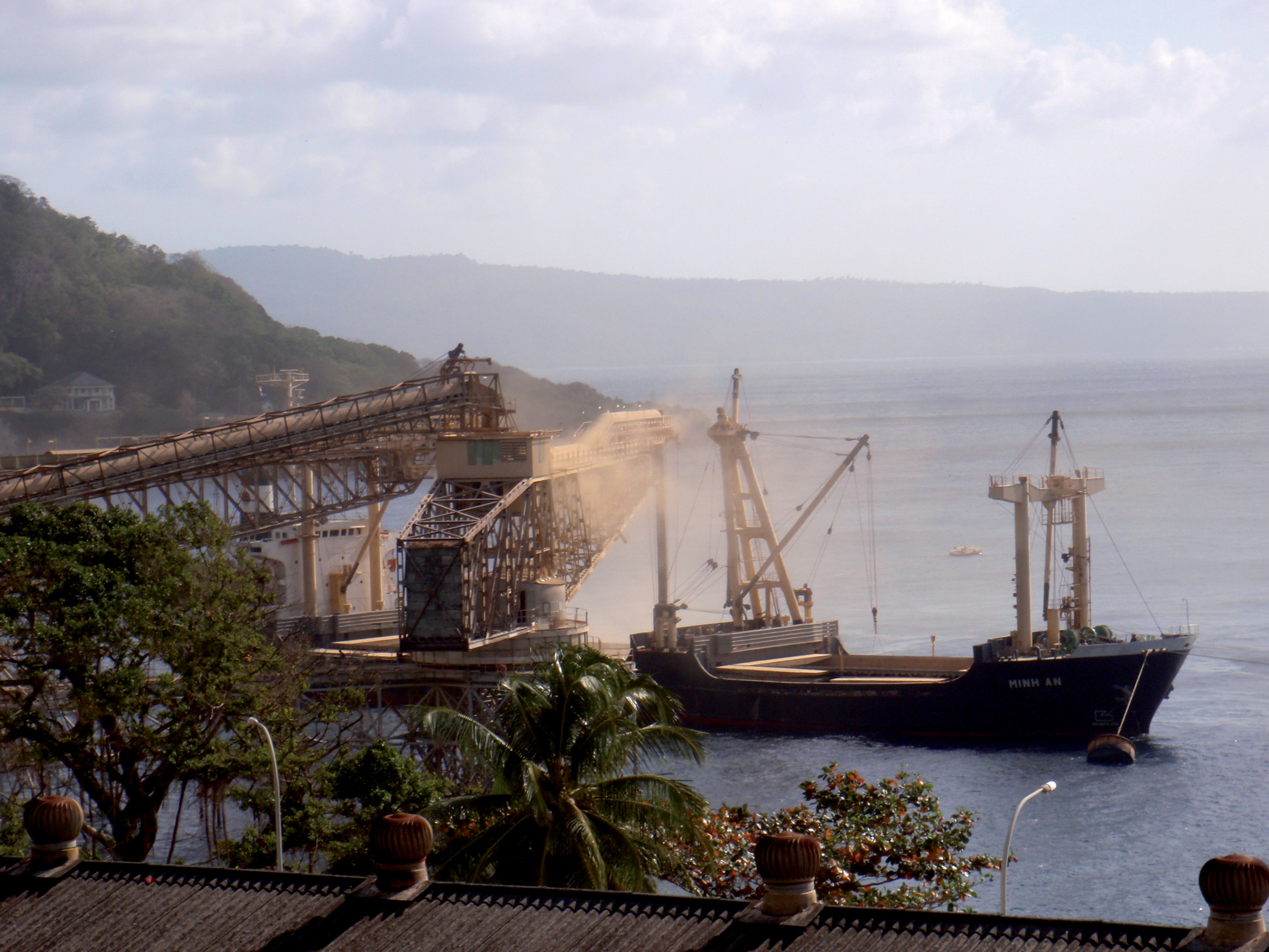
The island's recent history is linked particularly to human migration from the Middle East and Asia, and the Australian government's severe repression of it. Over time, Christmas Island has become one of the major stopping points for those trying to reach Australia, in particular from Iraq, Afghanistan and Sri Lanka. They transit via Indonesia, which is only a few hundred nautical miles away. Since 2001, the island has been home to the largest Australian migrant detention center, housing those that have been caught trying to enter the country illegally or intercepted at sea. There were around a thousand people being held when we were there, all no doubt holding out for a visa, but who would more than likely be sent back to where they came from. It's a state of the art center, with CCTV, detection microphones, electric gates, electrified fences, movement detectors, microwave detectors, inmate recognition zones and children’s quarters etc… Some months earlier when we crossed the Torres Strait and sailed along the Australian Northern Territories, we had seen that the Australians did not mess around when it came to illegal immigration and the protection of their borders! Planes flew over our yacht every day, the crew members regularly had to identify themselves and there were questions over the VHF every day… Australia puts enormous resources into its anti-immigration strategy, and they even go as far as supplying speedboats to neighboring Pacific Islands who cannot afford them…
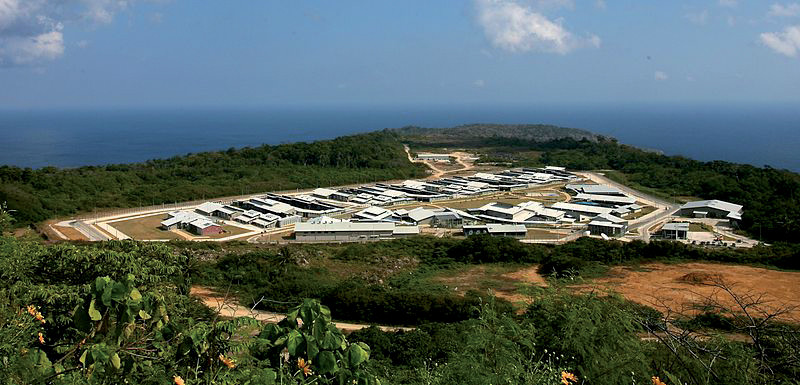
The Christmas Island detention camp is sometimes compared to Guantanamo in Cuba. We were told that the Americans had actually envisaged renting the Christmas Island installation during their operations In Iraq and Afghanistan. Christmas Island's coastline, ideally situated for clandestine immigration, has unfortunately seen many tragic shipwrecks in the last two decades which have caused dozens of deaths. On December 15th 2010, a migrant ship sank off the northern coast of Christmas Island in bad weather, killing 27 and injuring 36. Video footage taken by inhabitants of the island went viral. It was felt that the Australians did not make enough effort to limit the human catastrophe. Since this event, an ultra-modern Australian patrol ship constantly monitors the waters around Christmas Island. During our time in the not very sheltered waters of Flying Fish Cove, we could almost always see the boat's silhouette slipping along the Island's coastline. The main mission of this highly-equipped guard dog is to intercept sea-borne migrants, usually onboard makeshift boats. It is also there to prevent another tragedy happening, and to calm public opinion which was traumatized by the images filmed by locals and diffused by the international media… During our stay on Christmas Island, it was announced that a clandestine craft had been spotted by planes, and the tension among the security forces on the island was tangible.
But the times are changing, and the Australian government, tired of being singled out by NGOs complaining about their eastern Guantanamo, have recently closed the detention center, at least provisionally (October 2018). Illegal migrants who try to force their way in are still arrested, but they are immediately transferred and held on the mainland…
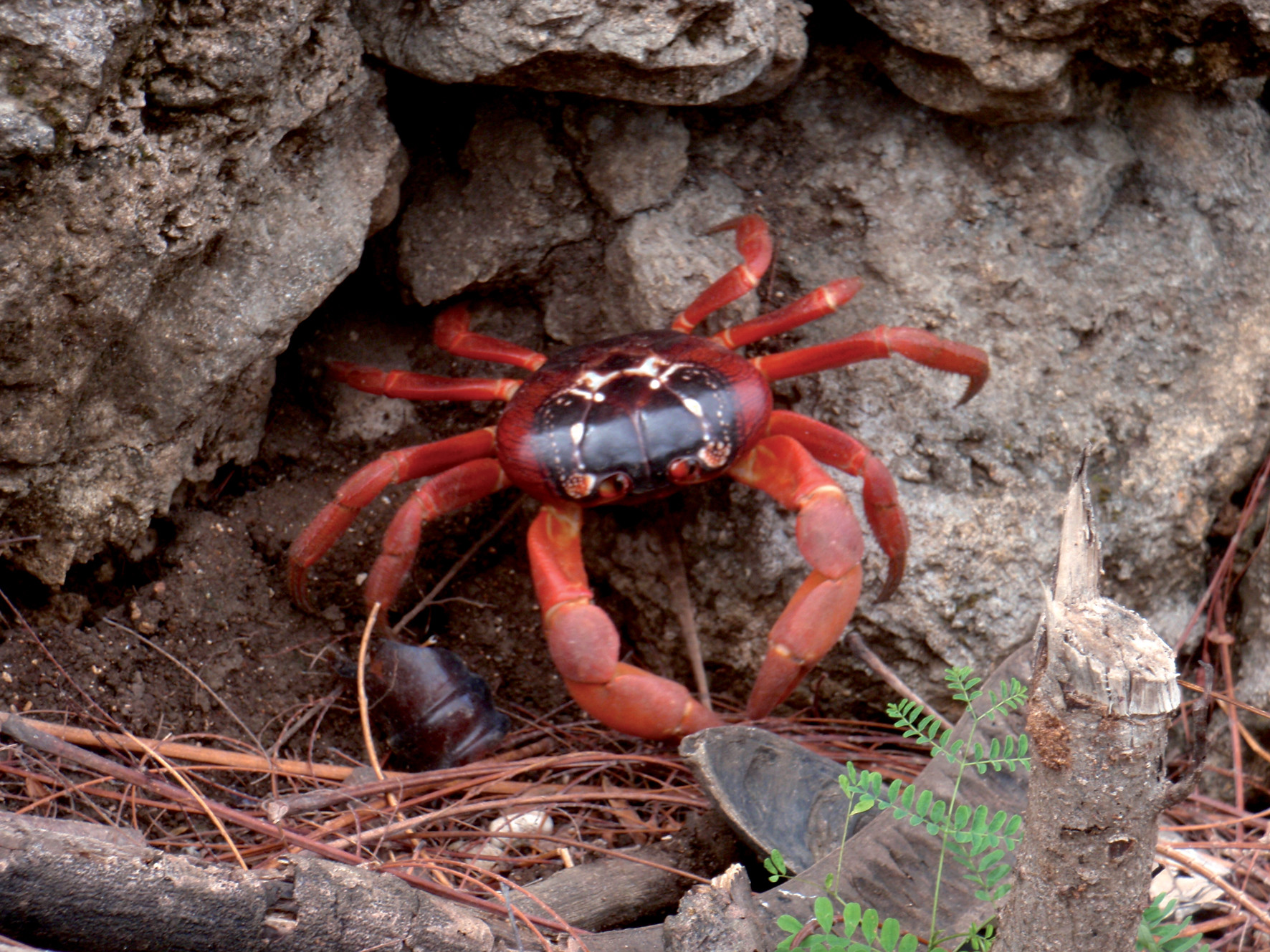
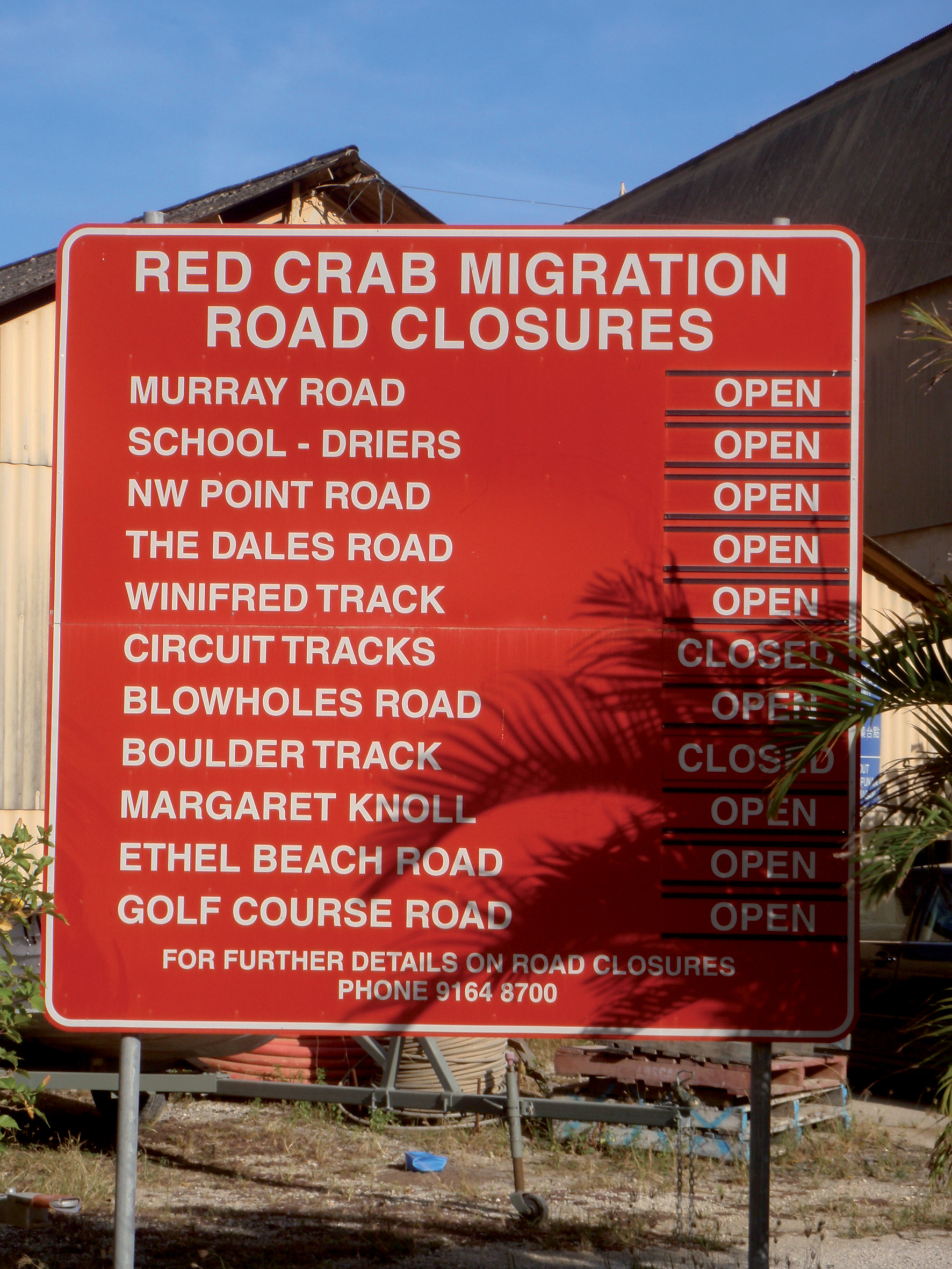
Another more amusing peculiarity about Christmas Island, are the famous red crabs! Because the island is isolated in the middle of the ocean, lots of the flora and fauna is endemic. There are millions of red crabs on the island, and during the rainy season there is an incredible movement of these animals with the aim of reproducing. Normally, they live in the undergrowth, in holes in the ground in the humid forests. They feed on leaves, fruit and snails. (There are also Coconut or "Robber" crabs on Christmas, which don't hesitate to eat their cousins alive!). These charming creatures, which are not aggressive towards man, struggle to survive in conditions which are too hot or too dry. During the dry season they hide in their burrows, covered in leaves to stay cool. So they await the start of the rainy season in October/November, to begin their incredible migration to the sea. The crab's reproduction on Christmas Island is linked to the phases of the moon. They leave their forests and head straight for the sea as soon as the first monsoon rains begin, with whole columns of them taking whichever route is possible. Gardens, schools, roads, tracks, golf courses. Nothing deters them because their instinct to reproduce is so strong. The government has installed bridges and tunnels for the red crabs to limit the carnage caused by passing vehicles. Throughout the three weeks of this amazing transhumance, the locals go nonchalantly about their business, playing golf among thousands of crabs and cutting their speed or avoiding certain roads.
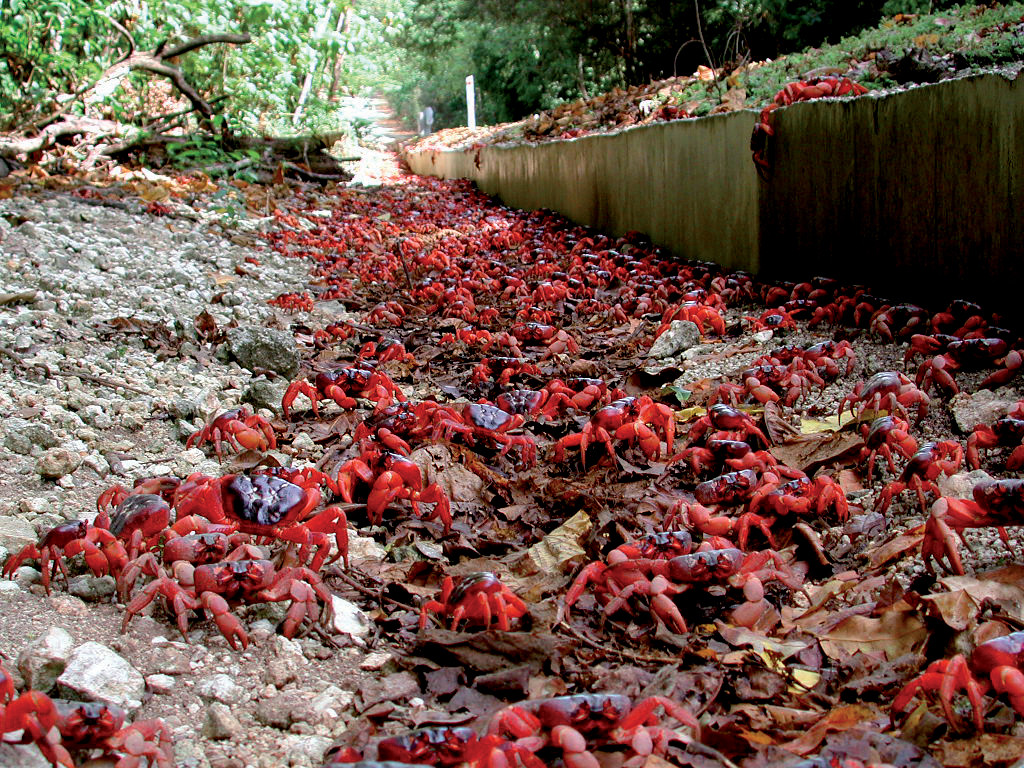
It's the males who are the first to begin the migration from the higher ground down to the coast, soon followed by the females. They have around 5 to 8 kms (3 to 5 miles) to cover and it can take them up to 5 to 7 days… They tumble off the cliffs and when at the water’s edge, dig temporary burrows (up to 40 per square meter), where they mate with the females. As soon as their job is done, they head back to the hills and leave the females to incubate their eggs (around 100,000 per crab) for around 2 weeks. When the moon reaches the last quarter of its phase, usually at daybreak, and with a high tide, millions of female red crabs begin a dance which is crucial for the survival of the species: they lay hundreds of millions of eggs in the sea. Upon contact with the sea water, the eggs hatch, liberating the larvae. This is good news for the manta rays and whale sharks, among all the other predators invited to this annual ritual. A month later, a small proportion of the larvae will have survived and grown, and will get brought back to the foreshore by the ocean waves. The water's edge of Christmas Island becomes a living red carpet. The baby crab's long journey starts with a real challenge: the cliffs which they have to surmount under the watchful gaze of the starving sea birds… The few who survive this crucial cycle in their lives will go and hide in the undergrowth in the island's interior, waiting for four or five years until they are themselves sexually mature. They will then participate in the incredible annual migration of the Christmas Island red crabs…
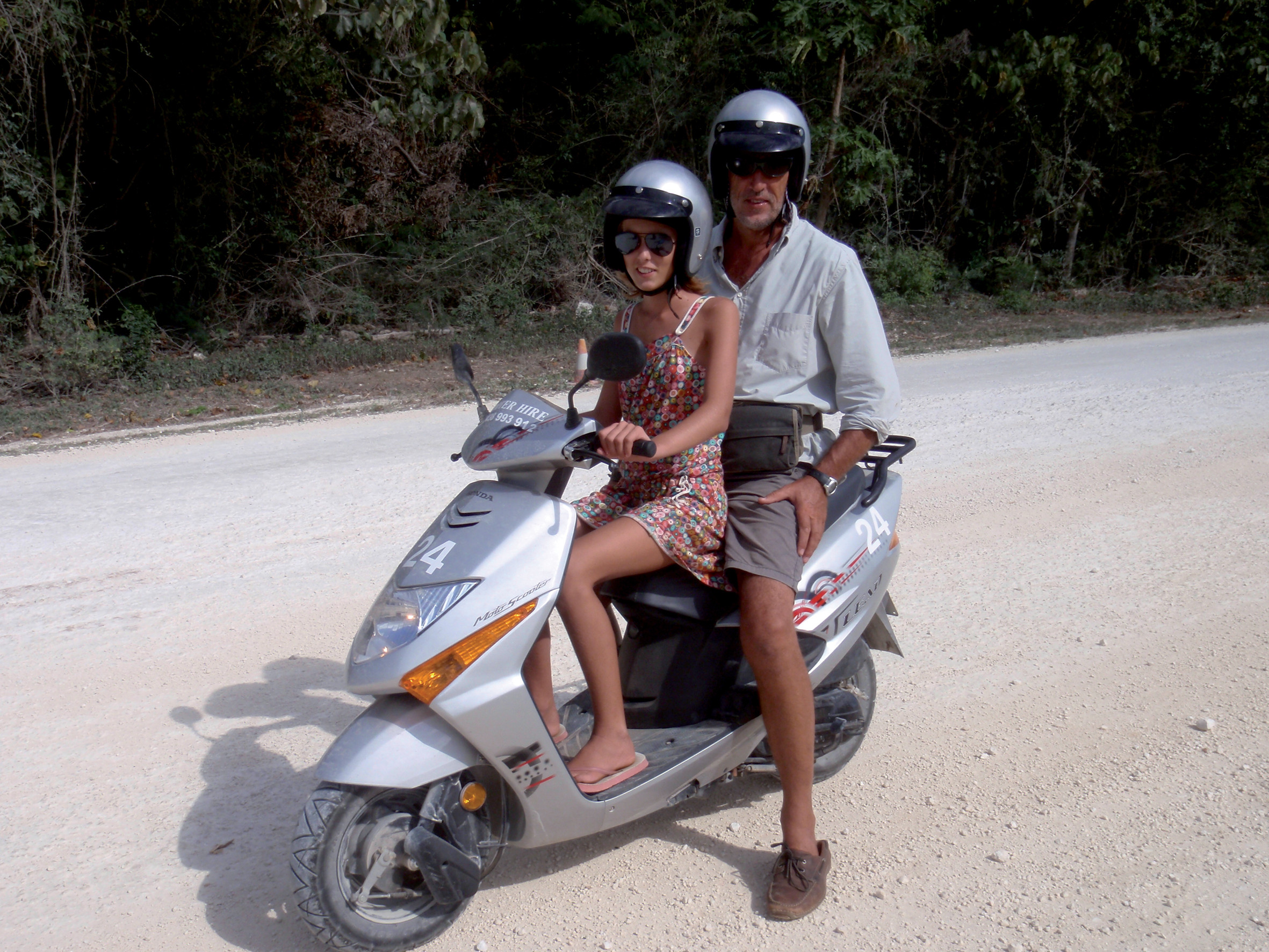
Marin turned 14 when we were on Christmas Island. It was his third birthday of the voyage. For this day our teenager was allowed to choose his (typically anglo-saxon) meal: burger and fries! Oh the material delights of our stopovers… Luckily, in Christmas's Australian supermarket, we were able to find everything that we needed to make our Big Burgers! As for the cake, there were two: one chocolate, the other apple. To help us blow out his candles, there were our new Flemish friends and their three children from "A Small Nest", who we had previously met in Lombok, and David, sailing alone. He was an American orchestral conductor and accomplished video maker. Marin's main present was a kite surfing course on Rodrigues Island, one of our next stopovers! Happy birthday son!
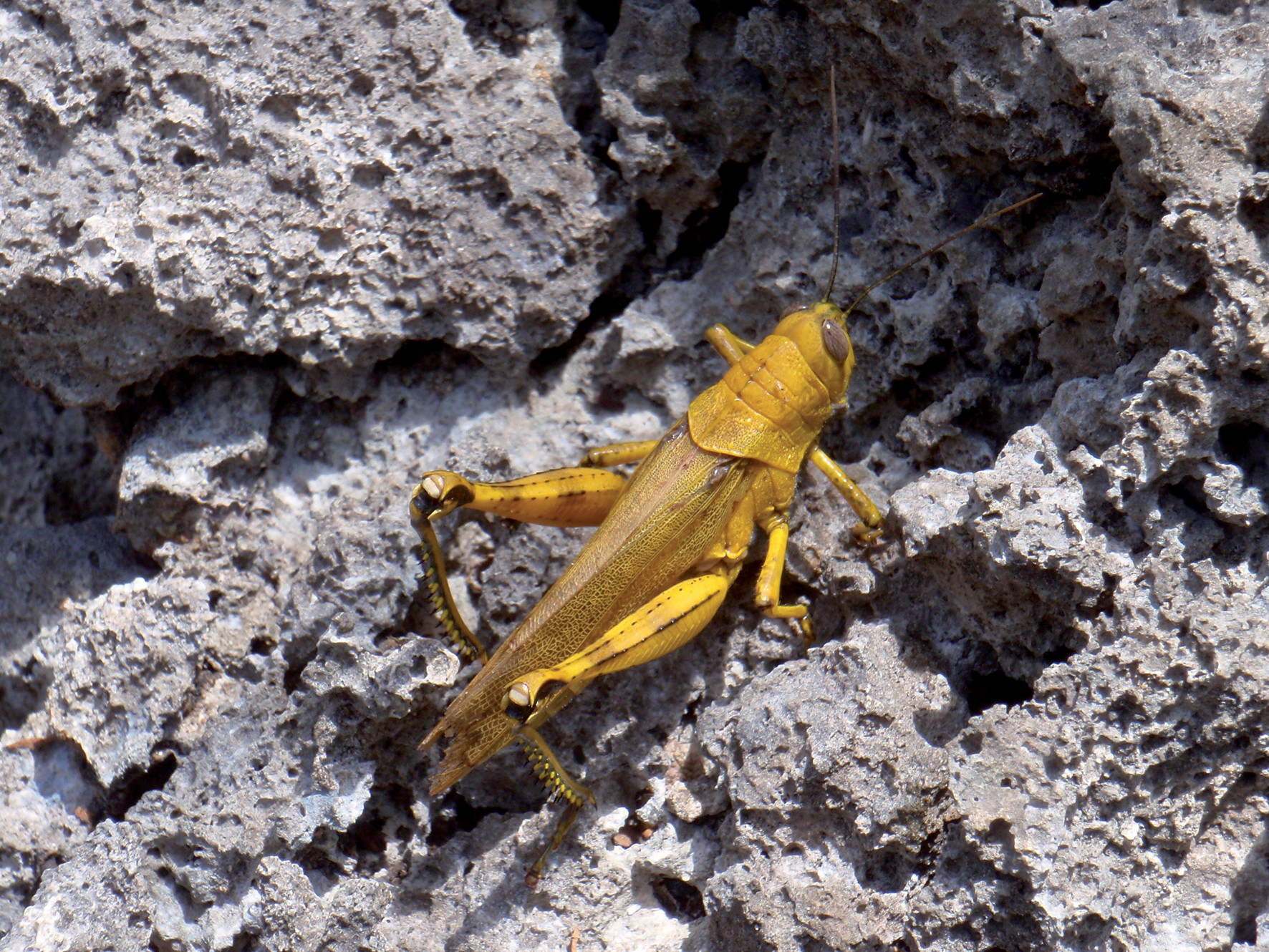
At the end of our stay on Christmas Island, we rented scooters to discover the island. To our surprise, the scooter drivers were not those that were planned in the first place! The kids quickly wanted to take over the controls. I ended up on the back with an ecstatic Adélie, and Barbara behind with Marin who was in heaven! It was the sort of experience that started to make us parents feel old! But despite that, what a joy it was to see our children growing up before our eyes on this journey…
What readers think
Post a comment
No comments to show.